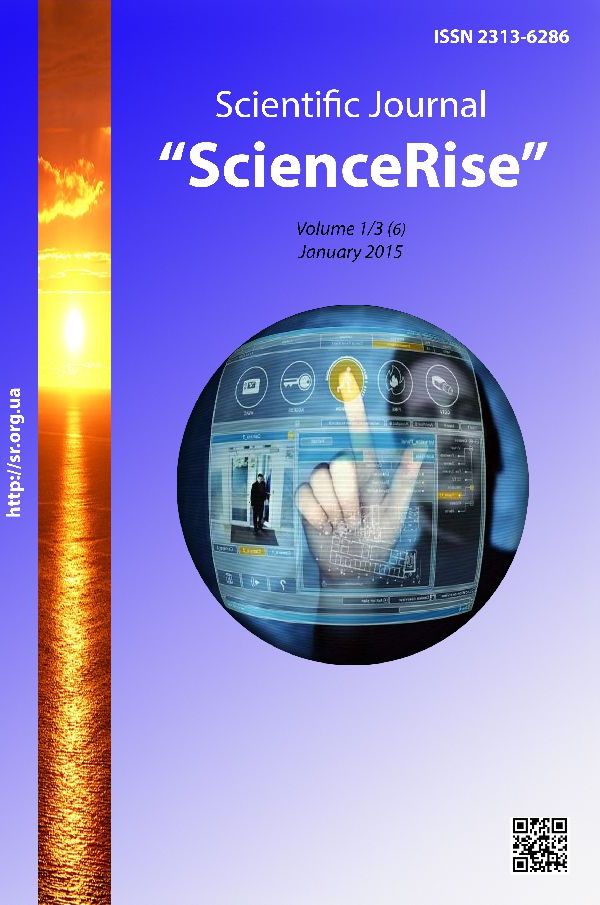Prognostic factors in de novo myelodysplastic syndrome in young and middle-aged people
DOI:
https://doi.org/10.15587/2313-8416.2015.36499Keywords:
myelodysplastic syndromes, prognosis, expression CD95 and FLT3Abstract
We spent multivariate analysis of clinical and laboratory parameters for the prediction of de-novo myelodysplastic syndromes (MDS) patients aged 18-60 years. The results of clinical application of prognostic systems in MDS show that there is a large variability within individual risk groups, especially at low-risk MDS. So now hematologists conduct research aimed at identifying additional adverse risk MDS. This is done so that patients with low-risk MDS embodiments and unfavorable prognosis could benefit from early therapeutic intervention, and not only be clinician monitored until disease progression. We found that additional adverse risk factors for the development of MDS are the expression of CD95 in bone marrow ≤40 % and FLT3≥60 %. The expression level of CD95 in bone marrow cells≤40 % and FLT3≥60 % can be considered as a prognostic marker progression of MDS and time start specific therapy
References
Kosmider, O., Gelsi-Boyer, V., Cheok, M. et al. (2009). TET2 mutation is an independent favorable prognostic factor in myelodysplastic syndromes. Blood, 114 (15), 3285–3291. doi: 10.1182/blood-2009-04-215814
Kjeldsen, L., Dybedal, I., Hellström-Lindberg, E. et al. (2010). Guidelines for the diagnosis and treatment of myelodysplastic syndromes and chronic myelomonocytic leukemia. Nordic MDS Group. MDS Guideline Programme, 5, 4th update, 43.
Malcovati, L., Porta, M. G., Pascutto, C. et al. (2005). Prognostic factors and life expectancy in myelodysplastic syndromes classified according to WHO criteria: a basis for clinical decision making. Journal of Clinical Oncology, 23 (30), 7594–7603. doi: 10.1200/jco.2005.01.7038
Malcovati, L., Germing, U., Kuendgen, A. et al. (2008). Time-Dependent Prognostic Scoring System for Predicting Survival and Leukemic Evolution in Myelodysplastic Syndromes. Journal of Clinical Oncology, 25 (23), 3503–3510 doi: 10.1200/jco.2006.08.5696
Weinberg, O. K., Seetharam, M., Ren, L. et al. (2009). Clinical characterization of acute myeloid leukemia with myelodysplasia-related changes as defined by the 2008 WHO classification system. Blood, 113 (9), 1906–1908. doi: 10.1182/blood-2008-10-182782
Cazzola, M. (2011). Risk assessment in myelodysplastic syndromes and myelodysplastic/myeloproliferative neoplasms. Haematology, 96 (3), 349–352. doi: 10.3324/haematol.2010.030023
Alessandrino, E. P., Della Porta, M. G., Bacigalupo, A. et al. (2008). WHO classification and WPSS predict posttransplantation outcome in patients with myelodysplastic syndrome: a study from the Gruppo Italiano Trapianto di Midollo Osseo (GITMO). Blood, 112 (3), 895–902. doi: 10.1182/blood-2008-03-143735
Greenberg, P., Cox, C., LeBeau, M. M. et al. (1997). International scoring system for evaluating prognosis in myelodysplastic syndromes. Blood, 89 (6), 2079–2088.
Greenberg, P. L., Tuechler, H., Schanz, J. et al. (2012). Revised International prognostic scoring system for myelodysplastic syndromes. Blood, 120 (12), 2454–2465. doi: 10.1182/blood-2012-03-420489
Therneau, T. (2014). A Package for Survival Analysis in S. R package version 2.37-7. Available at: http://CRAN.R-project.org/package=survival (Last accessed: 15-09-2014).
R: A language and environment for statistical computing. R Foundation for Statistical Computing/R Core Team (2013). Vienna, Austria. Available at: http://www.R-project.org/
Brunning, R. D., Orazi, A., Germing, U. et al.; Swerdlow, S. H., Campo, E., Harris, N. L. et al. (Eds.) (2008). Myelodysplastic syndromes/neoplasms, overview. In: WHO Classification of Tumours of Haematopoietic and Lymphoid Tissues. Lyon: IARC, 88–93.
Downloads
Published
Issue
Section
License
Copyright (c) 2015 Наталья Николаевна Климкович, Ольга Владимировна Красько, Татьяна Ивановна Козарезова

This work is licensed under a Creative Commons Attribution 4.0 International License.
Our journal abides by the Creative Commons CC BY copyright rights and permissions for open access journals.
Authors, who are published in this journal, agree to the following conditions:
1. The authors reserve the right to authorship of the work and pass the first publication right of this work to the journal under the terms of a Creative Commons CC BY, which allows others to freely distribute the published research with the obligatory reference to the authors of the original work and the first publication of the work in this journal.
2. The authors have the right to conclude separate supplement agreements that relate to non-exclusive work distribution in the form in which it has been published by the journal (for example, to upload the work to the online storage of the journal or publish it as part of a monograph), provided that the reference to the first publication of the work in this journal is included.

